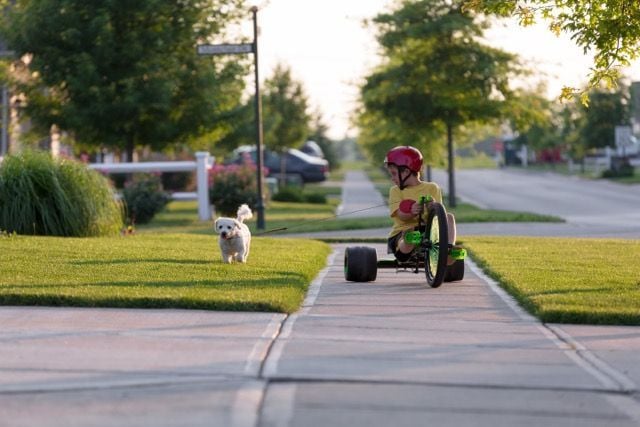Topics:
Search for topics or resources
Enter your search below and hit enter or click the search icon.
Providing your email address will keep you updated should we need to provide updates specific to your location.
September 26th, 2022 | 2 min. read
By Sarah Etler

Even though the sidewalk in front of your home is public property, it is your responsibility as the private property owner to keep it safe, maintained, and free of hazards.
No one likes the idea of having trip hazards in front of their house, and if you’re faced with this dilemma, you’re probably wondering if it’s up to you to repair and maintain the area.
In many cities and municipalities across the US, it’s up to the property owners to repair sidewalks and similar public areas in front of their homes or businesses.
It may seem counterintuitive that publicly-owned sidewalks are up to private citizens to repair, but this is also how it works in Louisville, Kentucky.
If your property borders a sidewalk or other similar public space, like steps, parking spaces, or driveways, its repair and maintenance are up to you.
Maintenance of sidewalks and similar public areas can include:
The Louisville, Kentucky government website explains, “If any portion of a sidewalk or driveway is a danger to the public, the dangerous section must be repaired by the [property] owner.”
Making sure your sidewalk is safe and properly maintained will prevent people from getting hurt and causing liability issues.
The following are all ways that you can eliminate trip hazards and repair the concrete sidewalk in front of your property:
Grinding down the trip hazards and uneven parts of the sidewalk can be a cost-effective and quick way to minimize potential harm.
While sometimes concrete grinding is a good option, it comes with some drawbacks, like the potential for future damage to the concrete as it’s exposed to worse freeze-thaw cycles, and its potential to crack and break as grinding makes the concrete thinner.
Concrete leveling is a great way to bring settled slabs of concrete back to their original position, resolving trip hazards. Concrete leveling is also a fast and inexpensive option for concrete repair.
While concrete leveling is a convenient option in many situations, it doesn’t work under certain conditions, such as if the concrete is crumbling or there is extreme interference from tree roots.
Ripping out the concrete and pouring it new is always an option, but it’s typically much more expensive than both leveling and grinding, and comes with more drawbacks, like mismatched slabs, lots of mess, and resettling.
Sometimes replacement is the only option when other repair methods, like concrete grinding and concrete leveling, aren’t a good fit for the job.
Now that you know the sidewalk in front of your house or other public spaces that border your property are your responsibility, you can take steps to make sure you keep them properly maintained and free from dangerous conditions.
Not sure where to start? We have lots of resources in our Learning Center all about concrete repair. You may be interested in:
Sarah Etler joined A-1 Concrete Leveling after receiving her Bachelor of Arts degree in English from Northern Kentucky University. As A-1's Content Marketing Manager, she works closely with industry experts to produce content that will best answer questions related to concrete repair and maintenance practices. Sarah loves living a life full of discovery and is excited every day to see what new things she can learn and share with those around her.
Topics: